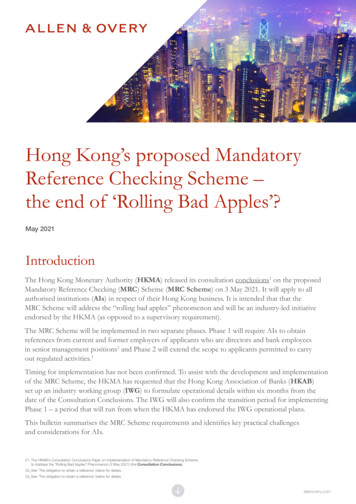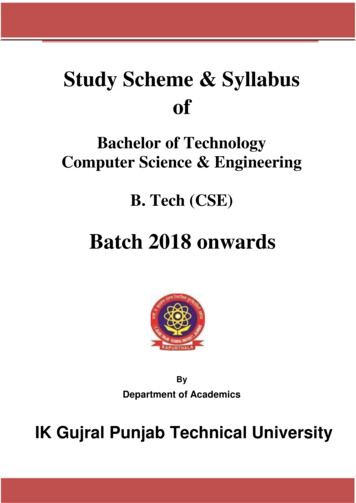
Transcription
Study Scheme & SyllabusofBachelor of TechnologyComputer Science & EngineeringB. Tech (CSE)Batch 2018 onwardsByDepartment of AcademicsIK Gujral Punjab Technical University
I.K. Gujral Punjab Technical University, KapurthalaBachelor of Technology in Computer Science & EngineeringBachelor of Technology in Computer Science & EngineeringIt is a Graduate (UG) Programme of 4 years duration (8 semesters)Courses & Examination Scheme:First SemesterCourseCodeCourseTypeBTPH104-18Basic ScienceCourseBasic ScienceCourseBasic 04-18BTEE101-18BTEE102-18BTME101-18Course TitleSemiconductor Physics310406010040033020501.53*1040601004Basic ElectricalEngineering31040601004Basic ElectricalEngineering (Lab)0023020501Engineering Graphics &Design1046040100300212215Semiconductor Physics(Lab)Math-1Mentoring andProfessional DevelopmentBMPD101-18TotalLoadMarksTotal CreditsAllocationsDistributionMarksL T P Internal ExternalSatisfactory / Un-Satisfactory290360650NonCredit20.5*These are the minimum contact hrs. allocated. The contact hrs. may be increased by institute as per the needbased on the content of subject.2 Page
I.K. Gujral Punjab Technical University, KapurthalaBachelor of Technology in Computer Science & EngineeringSecond rse TypeCourse TitleBasic Science CourseBasic Science CourseBasic Science CourseEngineering ScienceCourseEngineering ScienceCourseChemistry-IChemistry-I (Lab)Maths-IIProgramming forProblem SolvingProgramming forProblem Solving(Lab)Workshop /ManufacturingPracticesEnglishEngineering ScienceCourseHumanities andSocial SciencesincludingManagement coursesHumanities andSocial SciencesincludingManagement 00212215English (Lab)Mentoring llocationsDistributionCreditsMarksL T P Internal ExternalSatisfactory / Un-Satisfactory290360650NonCredit20.5*These are the minimum contact hrs. allocated. The contact hrs. may be increased by institute as per the needbased on the content of subject.3 Page
I.K. Gujral Punjab Technical University, KapurthalaBachelor of Technology in Computer Science & EngineeringThird SemesterCourseCodeBTES301-18Course TypeCourse TitleEngineering ScienceCourseDigital ElectronicsBTCS301-18ProfessionalCore CoursesProfessionalBTCS302-18Core CoursesBTAM304-18 Basic ScienceCourseHumanities & SocialHSMC101/102 Sciences gScience CourseBTCS303-18ProfessionalCore CoursesBTCS304-18ProfessionalCore CoursesBTCS305-18ProfessionalCore CoursesData structure &AlgorithmsObject OrientedProgrammingMathematics-IIIFoundation Course inHumanities(Development ofSocieties/Philosophy)Digital ElectronicsLabData structure &Algorithms LabObject OrientedProgramming lab.IT Workshop*SummerInstitutionalTrainingTotal4 PageLoadMarksTotalAllocationsDistributionMarks CreditsL T P Internal 5010006040100Satisfactory/Unsatisfactory153 1238042080021
I.K. Gujral Punjab Technical University, KapurthalaBachelor of Technology in Computer Science & EngineeringFourth SemesterCourseCodeBTCS 401-18Course TypeProfessional CoreCoursesBTES 401-18EngineeringScienceCourseBTCS 402-18 Professional CoreCoursesBTCS 403-18 Professional CoreCoursesHumanities & SocialHSMC 122-18 Sciences includingManagement CoursesMandatoryEVS101- 18CoursesBTES 402-18 Engineering ScienceCourseBTCS 404-18BTCS 405-18Professional CoreCoursesProfessional CoreCoursesTotal5 PageCourse TitleLoadMarksTotalAllocationsDistributionMarks CreditsL T P Internal ExternalDiscrete Mathematics3 1040601004ComputerOrganization &Architecture3 1040601003Operating Systems3 10406010033 10406010032 10406010031-----00 0230205010 0430205020 04302050236065021Design & Analysis ofAlgorithmsUniversalHuman ValuesIIEnvironmentalSciencesComputerOrganization &ArchitectureLabOperating SystemsLabDesign & Analysis ofAlgorithms Lab15510290
I.K. Gujral Punjab Technical University, KapurthalaBachelor of Technology in Computer Science & EngineeringFifth SemesterCourseCodeBTCS 501-18Course TypeProfessional CoreCoursesProfessionalCore CoursesBTCS 503-18 Professional CoreCoursesBTCS 504-18 ProfessionalCore CoursesBTCS XXX-18 Professional ElectiveBTCS 502-18BTCS YYY-18 ProfessionalElective CoursesBTCS 505-18 Professional CoreCoursesBTCS 506-18BTCS 507-18ProfessionalCore CoursesProfessional CoreCoursesBTCS XXX-18 ProfessionalElectiveBTCS YYY-18 Professional ElectiveCoursesCourse tionsDistributionMarks CreditsL T P Internal External30040601003Formal Language & 3Automata TheorySoftware 601003ComputerNetworksElective-IElective-II30 03030 0DatabaseManagement Systems 0LabSoftware Engineering 0LabComputer0Networks LabElective-I Lab0043020502023020501302050130205010 200200 2302050000604010018112450500Elective-II lab1Industrial TrainingTotal6 Page950Satisfactory/Unsatisfactory24
I.K. Gujral Punjab Technical University, KapurthalaBachelor of Technology in Computer Science & EngineeringSixth SemesterCourseCodeCourse TypeProfessional CoreCoursesBTCS 601-18 Professional CoreCoursesBTCS ZZZ-18 Professional ElectiveCoursesBTCS UUU-18 Professional ElectiveCoursesOpen ElectiveBTOE ***CoursesCourse TitleLoadMarksTotalAllocationsDistributionMarks CreditsL T P Internal ExternalBTCS 601-18Compiler 3Elective-IV30040601003Open Elective-I30040601003Project-10Compiler Design Lab00660401003023020501Artificial Intelligence0Lab023020501Elective-III lab0023020501Elective-IV lab00230205011501438042080022Artificial IntelligenceBTCS 602-18ProjectProfessional CoreCoursesBTCS 601-18 Professional CoreCoursesBTCS ZZZ-18 Professional ElectiveCoursesBTCS 603-18BTCS UUU-18 Professional ElectiveCoursesTotal7 Page
I.K. Gujral Punjab Technical University, KapurthalaBachelor of Technology in Computer Science & EngineeringSeventh SemesterCourseCodeCourse TypeCourse TitleLoadMarksTotalAllocationsDistributionMarks CreditsL T P Internal ExternalBTCS VVV-18 Professional ElectiveBTCS TTT-18BTOE ***Elective-V30Professional ElectiveCoursesElective-VI30Open ElectiveCoursesOpen Elective-II30406010030406010030040601003BTOE ***Open Elective CoursesOpen Elective- III30040601003BTCS 701-18Professional CoreCoursesMachine achine LearningLab0023020501Elective-V lab0023020501Elective-VI lab00230205011501841044085024BTCS 702-18BTCS 703-18Professional CoreCoursesBTCS VVV-18 Professional ElectiveBTCS TTT-18 Professional ElectiveCoursesTotalEighth SemesterMarks DistributionCourse TitleCourse CodeInternalBTCS 801-18CourseCodeBTCS 801-18BTCS 802-18BTCS 803-18BTCS 804-18Semester TrainingCourse butionMarks CreditsL T P Internal ExternalProfessional CoreCoursesSocial NetworkAnalysis20Professional CoreCoursesCyber Attacks20Professional CoreCoursesDeep Learning3ProjectProject-III07Total8 PageCourse 100400122012024080260200500616
I.K. Gujral Punjab Technical University, KapurthalaBachelor of Technology in Computer Science & EngineeringLIST OF ELECTIVESElective-IBTCS 508-18 Programming in JavaBTCS 509-18 Web and Open Source TechnologiesBTCS 510-18 Programming in PythonBTCS 511-18 Programming in Java labBTCS 512-18 Web and Open Source Technologies labBTCS 513-18 Programming in Python LabElective-IIBTCS 514-18 Mobile Application DevelopmentBTCS 515-18 Computer GraphicsBTCS 516-18 Internet of ThingsBTCS 517-18 Mobile Application Development labBTCS 518-18 Computer Graphics LabBTCS 519-18 Internet of Things LabElective-IIIBTCS 604-18 Cyber SecurityBTCS 605-18 Data MiningBTCS 606-18 Cloud ComputingBTCS 607-18 Cyber Security LabBTCS 608-18 Data Mining labBTCS 609-18 Cloud Computing labElective-IVBTCS 610-18 Information Theory and CodingBTCS 611-18 Data ScienceBTCS 612-18 Soft ComputingBTCS 613-18 Information Theory and Coding labBTCS 614-18 Data Science LabBTCS 615-18 Soft Computing labElective-VBTCS 703-18 Quantum ComputingBTCS 704-18 Ad-Hoc and Sensor NetworksBTCS 705-18 Speech and Natural Language ProcessingBTCS 706-18 Quantum Computing labBTCS 707-18 Ad-Hoc and Sensor Networks labBTCS 708-18 Speech and Natural Language Processing lab9 Page
I.K. Gujral Punjab Technical University, KapurthalaBachelor of Technology in Computer Science & EngineeringElective-VIBTCS 709-18 Block Chain TechnologiesBTCS 710-18 Software Defined NetworkingBTCS 711-18 Image ProcessingBTCS 712-18 Block Chain Technologies labBTCS 713-18 Software Defined Networking LabBTCS 714-18 Image Processing labOpen electives offered by the department:Courses of odd BTCS701-18BTCS709-18BTCS710-18Enterprise Resource PlanningCyber laws and IPRDatabase Management SystemComputer NetworksArtificial IntelligenceBlock Chain TechnologiesData ScienceCourses of even 10 P a g eComputer Organisation & ArchitectureOperating SystemInternet of ThingsCyber Security
I.K. Gujral Punjab Technical University, KapurthalaBachelor of Technology in Computer Science & EngineeringLIST OF COURSES FOR HONOURS DEGREEIn order to have an Honours degree, a student choose 18-20 credits from the following courses in addition.Graph TheoryHours perMarksWeekDistributionL T P Internal External3 0 04060Computer Vision30040601003BTCS 611-18 003BTCS H03-18 ProfessionalElectiveCoursesSoftware ProjectManagement30040601003BTCS H04-18 ProfessionalElectiveCoursesCryptography& NetworkSecurity30040601003BTCS H05-18 01003BTCS 804-18 ProfessionalElectiveCoursesData Analytics30040601003BTCS 608-18 003ProfessionalBTCS H06-18 ElectiveCoursesICT inAgriculture andRuralDevelopment30040601003BTCS H07-18 es forSmart Cities30040601003BTCS H08-18 01003Course CodeType ofCourseBTCS H01-18 ProfessionalElectiveCoursesBTCS H02-18 ProfessionalElectiveCourses11 P a g eCourse TitleTotalMarksCredits1003
I.K. Gujral Punjab Technical University, KapurthalaBachelor of Technology in Computer Science & EngineeringMINOR DEGREE IN COMPUTER SCIENCE ENGG.(Credits required 20 from Core Electives/MOOCS*)List of Core Courses: Minimum of 2 courses must be opted, other than studied in regular course.Course CodeBTCS301-18 &BTCS303- 18BTCS302-18 &BTCS304- 18BTCS602-18 &BTCS605- 18BTCS402-18 &BTCS404- 18Type ofCourseMarks DistributionL T PInternal ExternalTotalMarksCreditsPCCData structure Theory& Lab30440T 30P60T 20P1505PCCObject OrientedProgramming Theory& Lab30440T 30P60T 20P1505PCCComputer networksTheory & Lab30240T 30P60T 20P1504PCCOperating systemTheory & Lab30440T 30P60T 20P150530240T 30P60T 20P150430440T 30P60T 20P1505BTES401-18 &BTCS402- 18ESCBTCS501-18 &BTCS504-18Course TitleHours perWeekPCCComputer Organisationand architectureTheory & LabDatabase Managementsystem Theory & Lab*List of Courses through MOOCS will be provided every six months through BOS/ MOOCSCoordinator; each course must be of minimum 12 weeks and of 4 credits after submission of successfulexam in that course.12 P a g e
I.K. Gujral Punjab Technical University, KapurthalaBachelor of Technology in Computer Science & EngineeringList of Electives: 3 courses can be opted, other than studied in regular course.CourseCodeBTCS507-18&BTCS511- 18BTCS608-18&BTCS616-18BTCS613-18&BTCS621- 18BTCS707-18&BTCS715-18BTCS804-18&BTCS808- 18BTCS509-18&BTCS513- 18BTCS606-18&BTCS614- 18BTCS612-18&BTCS620- 18BTCS702-18&BTCS710- 18BTCS704-18&BTCS712- 1813 P a g eType ofCourseCourse TitleHours perWeekMarks DistributionL T PInternal ExternalTotalMarksCreditsELECTIVEWeb TechnologiesTheory & Lab30240T 30P60T 20P1504ELECTIVEMachine LearningTheory & Lab302 40T 30P60T 20P1504ELECTIVECloud computingTheory & Lab302 40T 30P60T 20P1504ELECTIVEAdhoc and Sensornetwork Theory &Lab302 40T 30P60T 20P1504ELECTIVEData Analysis Theory& Lab302 40T 30P60T 20P1504ELECTIVEComputer GraphicsTheory & Lab302 40T 30P60T 20P1504ELECTIVEMobile ApplicationDevelopment Theory& Lab302 40T 30P60T 20P1504ELECTIVEData Mining Theory& Lab302 40T 30P60T 20P1504ELECTIVEInformation Theory &Coding Theory & Lab302 40T 30P60T 20P1504ELECTIVESoft ComputingTheory & Lab302 40T 30P60T 20P1504
I.K. Gujral Punjab Technical University, KapurthalaBachelor of Technology in Computer Science & EngineeringFirstSemester14 P a g e
I.K. Gujral Punjab Technical University, KapurthalaBachelor of Technology in Computer Science & EngineeringBTPH104-18Semiconductor PhysicsL-3, T-1, P-0Credits - 4Prerequisite (if any): Introduction to Quantum Mechanics desirableCourse Objectives: The aim and objective of the course on Semiconductor Physics is to introduce the students of B. Tech.class to the formal structure of semiconductor physics so that they can use these in Engineering as per their requirement.Course Outcomes: At the end of the course, the student will be able toUnderstand and explain the fundamental principles and properties of electronic materials andCO1semiconductorsUnderstand and describe the interaction of light with semiconductors in terms of fermi golden rule.CO2Understand and describe the impact of solid-state device capabilities and limitations on electronicCO3circuit performanceUnderstand the design, fabrication, and characterization techniques of Engineered semiconductorCO4materialsDevelop the basic tools with which they can study and test the newly developed devices and otherCO5semiconductor applications.Detailed Syllabus:PART-AUNIT 1: Electronic materials (10 lectures)Free electron theory of metals, Density of states in 1D, 2D, and 3D, Bloch’s theorem for particles in a periodic potential,Energy band diagrams, Kronig-Penny model (to introduce origin of band gap), Energy bands in solids, E-k diagram, Direct andindirect bandgaps, Types of electronic materials: metals, semiconductors, and insulators, Occupation probability, Fermi level,Effective mass.UNIT II: Semiconductors (10 lectures)Intrinsic and extrinsic semiconductors, Dependence of Fermi level on carrier-concentration and temperature (equilibriumcarrier statistics), Carrier generation and recombination, Carrier transport: diffusion and drift, p-n junction, Metalsemiconductor junction (Ohmic and Schottky), Semiconductor materials of interest for optoelectronic devices.PART-BUNIT III: Light-semiconductor interaction (10 lectures)Optical transitions in bulk semiconductors: absorption, spontaneous emission, and stimulated emission; Einstein coefficients,Population inversion, application in semiconductor Lasers; Joint density of states, Density of states for phonons, Transitionrates (Fermi's golden rule), Optical loss and gain; Photovoltaic effect, Exciton, Drude model.UNIT IV: Measurement Techniques (10 lectures)Measurement for divergence and wavelength using a semiconductor laser, Measurements for carrier density, resistivity, hallmobility using Four-point probe and van der Pauw method, Hot-point probe measurement, capacitance-voltage measurements,parameter extraction from diode I-V characteristics.Reference books and suggested reading:1. J. Singh: Semiconductor Optoelectronics: Physics and Technology, McGraw-Hill Inc. (1995).2. B. E. A. Saleh and M. C. Teich: Fundamentals of Photonics, John Wiley & Sons, Inc., (2007).3. S. M. Sze: Semiconductor Devices: Physics and Technology, Wiley (2008).4. A. Yariv and P. Yeh, Photonics: Optical Electronics in Modern Communications, Oxford University Press, New York(2007).5. P. Bhattacharya: Semiconductor Optoelectronic Devices, Prentice Hall of India (1997).6. Ben G. Streetman: Solid State Electronics Devices, Pearson Prentice Hall.7. D.A. Neamen, “Semiconductor Physics and Devices”, Times Mirror High Education Group, Chicago, 1997.8. E.S. Yang, “Microelectronic Devices”, McGraw Hill, Singapore, 1988.9. Online course: “Semiconductor Optoelectronics” by M R Shenoy on NPTEL.10. Online course: "Optoelectronic Materials and Devices" by Monica Katiyar and Deepak Gupta on ----------------------------------------------15 P a g e
I.K. Gujral Punjab Technical University, KapurthalaBachelor of Technology in Computer Science & EngineeringBTPH114-18Semiconductor Physics LabL-0, T-0, P-3Credits - 1.5Pre-requisite (if any): (i) High-school educationCourse Objectives: The aim and objective of the Lab course on Semiconductor Physics is to introduce the students of B.Tech.class to the formal structure of semiconductor physics so that they can use these in Engineering as per their requirement.Course Outcomes: At the end of the course, the student will be able toAble to verify some of the theoretical concepts learnt in the theory courses.CO1Trained in carrying out precise measurements and handling sensitive equipment.CO2Introduced to the methods used for estimating and dealing with experimental uncertainties andCO3systematic "errors."Learn to draw conclusions from data and develop skills in experimental designCO4Write a technical report which communicates scientific information in a clear and concise manner.CO5Detailed Syllabus:Note: Students are expected to perform about 10-12 experiments from the following list, selecting minimum of 7-8 from theSection-A and 3-4 from the 4.15.16.17.18.19.20.21.22.23.24.25.26.To study the characteristic of different PN junction Diode-Ge and Si.To analyze the suitability of a given Zener diode as a power regulator.To find out the intensity response of a solar cell/Photo diode.To find out the intensity response of a LED.To determine the band gap of a semiconductor.To determine the resistivity of a semiconductor by four probe method.To confirm the de Broglie equation for electrons.To study voltage regulation and ripple factor for a half-wave and a full-wave rectifier without and with differentfilters.To study the magnetic field of a circular coil carrying current.To find out polarizability of a dielectric substance.To study B-H curve of a ferro-magnetic material using CRO.To find out the frequency of AC mains using electric-vibrator.To find the velocity of ultrasound in liquid.To study the Hall effect for the determination of charge current densities.Distinguish between Diamagnetic material, Paramagnetic and ferromagnetic material.Measurement of susceptibility of a liquid or a solution by Quincke’s method.To study the sample with the nano-scale objects and measure surface topography with different scales, width andheight of nano objects, and force-distance curves using AFM.To study the temperature coefficient of Resistance of copper.To determine the ratio k/e Using a transistor.To compare various capacitance and verify the law of addition of capacitance.To determine dipole moment of an organic molecule acetone.To measure the temperature dependence of a ceramic capacitor.Verification of the curie Weiss law for the electrical susceptibility of a ferromagnetic material.To study the laser beam characteristics like; wave length using diffraction grating aperture & divergence.To study laser interference using Michelson’s Interferometer.Study of diffraction using laser beam and thus to determine the grating element.Section-BVirtual lab:1.2.3.4.5.6.7.8.To draw the static current-voltage (I-V) characteristics of a junction diode.To plot the characteristics of thermistor and hence find the temperature coefficient of resistance.To determine the resistivity of semiconductors by Four Probe Method.To study Zener diode voltage as regulator and measure its line and load regulation.To study the B-H Curve for a ferromagnetic material.To study the Hall effect experiment to determine the charge carrier density.To determine the magnetic susceptibilities of paramagnetic liquids by Quincke's Method.To study the phenomena of magnetic hysteresis and calculate the retentivity, coercivity and saturation magnetization16 P a g e
I.K. Gujral Punjab Technical University, KapurthalaBachelor of Technology in Computer Science & Engineering9.of a material using a hysteresis loop tracer.Verification and design of combinational logic using AND, OR, NOT, NAND and XOR gates.Reference books and suggested reading:1.2.Advanced Practical Physics for students, B.L. Flint and H.T. Worsnop, 1971, Asia Publishing House.Advanced level Physics Practicals, Michael Nelson and Jon M. Ogborn, 4th Edition, reprinted 1985, HeinemannEducational Publishers.3. A Text Book of Practical Physics, I. Prakash & Ramakrishna, 11 th Edn, 2011, Kitab Mahal.4. Engineering Practical Physics, S. Panigrahi & B. Mallick, 2015, Cengage Learning India Pvt. Ltd.5. Practical Physics, G.L. Squires, 2015, 4 th Edition, Cambridge University Press.6. Laboratory Experiments in College Physics, C.H. Bernard and C.D. Epp, John Wiley and Sons, Inc., New York, 1995.7. Practical Physics, G.L. Squires, Cambridge University Press, Cambridge, 1985.8. Experiments in Modern Physics, A.C. Melissinos, Academic Press, N.Y., 1966.9. Practical Physics, C L Arora, S. Chand & Company Ltd.10. http://www.vlab.co.in11. 11. http://vlab.amrita.edu/index.php?sub 84L, 1T, 0Pcredits - 4Mathematics Paper-I(Calculus & Linear Algebra)Course Objective: The objective of this course is to familiarize the prospective engineers with techniques in basic calculus andlinear algebra. It aims to equip the students with standard concepts and tools at an intermediate to advanced level that will servethem well towards tackling more advanced level of mathematics and applications that they would find useful in theirdisciplinesDetailed Contents:Section-AUnit-I: Calculus (13 hours)Rolle’s theorem, Mean value theorems, Statements of Taylor’s and Maclaurin theorems with remainders; Indeterminate formsand L' Hôpital's rule; Maxima and minima. Evaluation of definite and improper integrals; Applications of definite integrals toevaluate surface areas and volumes of revolutions; Beta and Gamma functions and their properties.Unit-II: Matrix Algebra (12 hours)Matrices, vectors addition and scalar multiplication, matrix multiplication; Linear systems of equations, linear Independence,rank of a matrix, determinants, Cramer’s Rule, inverse of a matrix, Gauss elimination and Gauss-Jordan elimination.Section-BUnit-III: Linear Algebra (13 hours)Vector Space, linear dependence of vectors, basis, dimension; Linear transformations (maps), range and kernel of a linear map,rank and nullity, statement of rank-nullity theorem, Matrix associated with a linear map.Unit-IV: Linear Algebra (Contd.) (12 hours)Eigenvalues, eigenvectors, symmetric, skew-symmetric, and orthogonal Matrices, eigen bases; Similar matrices,diagonalization.Suggested Text/Reference Books1.2.3.4.5.G.B. Thomas and R.L. Finney, Calculus and Analytic geometry, 9th Edition, Pearson, Reprint, 2002.Erwin Kreyszig, Advanced Engineering Mathematics, 9th Edition, John Wiley & Sons, 2006.D. Poole, Linear Algebra: A Modern Introduction, 2nd Edition, Brooks/Cole, 2005.Veerarajan T., Engineering Mathematics for first year, Tata McGraw-Hill, New Delhi, 2008.B.V. Ramana, Higher Engineering Mathematics, Tata McGraw Hill New Delhi, 11th Reprint, 2010.17 P a g e
I.K. Gujral Punjab Technical University, KapurthalaBachelor of Technology in Computer Science & Engineering6.7.8.N.P. Bali and Manish Goyal, A text book of Engineering Mathematics, Laxmi Publications, Reprint, 2010.B.S. Grewal, Higher Engineering Mathematics, Khanna Publishers, 35th Edition, 2000.V. Krishnamurthy, V.P. Mainra and J.L. Arora, An introduction to Linear Algebra, Affiliated East–West press,Reprint 2005.Course Outcomes: The students will be ableTo apply differential and integral calculus to notions of curvature and to improper integrals. Apart from various applications,they will have a basic understanding of Beta and Gamma functions. The essential tools of matrices and linear algebra includinglinear transformations, eigenvalues, diagonalization and -------BTEE-101-18Basic Electrical EngineeringPre-requisites (if any): NilDetailed contents:[L: 3; T:1; P : 0]credits - 4Module 1: DC Circuits (8 hours)Electrical circuit elements (R, L and C), voltage and current sources, Kirchoff’s current and voltage laws, analysis of simplecircuits with dc excitation. Superposition, Thevenin’s and Norton’s Theorems. Time-domain analysis of first-order RL and RCcircuits.Module 2: AC Circuits (8 hours)Representation of sinusoidal waveforms, peak and rms values, phasor representation, real power, reactive power, apparentpower, power factor. Analysis of single-phase ac circuits consisting of R, L, C, RL, RC, RLC combinations (series andparallel), resonance. Three-phase balanced circuits, voltage and current relations in star and delta connections.Module 3: Transformers (6 hours)Magnetic materials, BH characteristics, ideal and practical transformer, equivalent circuit, losses in transformers, regulationand efficiency. Auto-transformer and three phase transformer connections.Module 4: Electrical Machines (8 hours)Generation of rotating magnetic fields, Construction and working of a three-phase induction motor, Significance of torque-slipcharacteristic. Loss components and efficiency, starting and speed control of induction motor. Single-phase induction motor.Construction, working, torque-speed characteristic and speed control of separately excited dc motor. Construction and workingof synchronous generators.Module 5: Power Converters (6 hours)DC-DC buck and boost converters, duty ratio control. Single-phase and three-phase voltage source inverters; sinusoidalmodulation.Module 6: Electrical Installations (6 hours)Components of LT Switchgear: Switch Fuse Unit (SFU), MCB, ELCB, MCCB, Types of Wires and Cables, Earthing. Types ofBatteries, Important Characteristics for Batteries. Elementary calculations for energy consumption, power factor improvementand battery backup.Suggested Text / Reference Books1.2.3.4.5.D. P. Kothari and I. J. Nagrath, “Basic Electrical Engineering”, Tata McGraw Hill, 2010.D. C. Kulshreshtha, “Basic Electrical Engineering”, McGraw Hill, 2009.L. S. Bobrow, “Fundamentals of Electrical Engineering”, Oxford University Press, 2011.E. Hughes, “Electrical and Electronics Technology”, Pearson, 2010.V. D. Toro, “Electrical Engineering Fundamentals”, Prentice Hall India, 1989.Course Outcomes18 P a g e
I.K. Gujral Punjab Technical University, KapurthalaBachelor of Technology in Computer Science & Engineering1.2.3.To understand and analyze basic electric and magnetic circuitsTo study the working principles of electrical machines and power converters.To introduce the components of low voltage electrical --BTEE-102-18Basic Electrical Engineering LaboratoryPre-requisites (if any): NilList of experiments/demonstrations:[L: 0; T:0; P : 2]1 credit Basic safety precautions. Introduction and use of measuring instruments – voltmeter, ammeter, multi-meter,oscilloscope. Real-life resistors, capacitors and inductors. Measuring the steady-state and transient time-response of R-L, R-C, and R-L-C circuits to a step change in voltage(transient may be observed on a storage oscilloscope). Sinusoidal steady state response of R-L, and R-C circuits –impedance calculation and verification. Observation of phase differences between current and voltage. Resonance inR-L-C circuits. Transformers: Observation of the no-load current waveform on an oscilloscope (non-sinusoidal wave-shape due to BH curve nonlinearity should be shown along with a discussion about harmonics). Loading of a transformer:measurement of primary and secondary voltages and currents, and power. Three-phase transformers: Star and Delta connections. Voltage and Current relationships (line-line voltage, phase-toneutral voltage, line and phase currents). Phase-shifts between the primary and secondary side. Cumulative threephase power in balanced three-phase circuits. Demonstrate of cut-out sections of machines: dc machine (commutator-brush arrangement), induction machine(squirrel cage rotor), synchronous machine (field winging - slip ring arrangement) and single-phase inductionmachine. Torque Speed Characteristic of separately excited dc motor. Synchronous speed of two and four-pole, three-phase induction motors. Direction reversal by change of phasesequence of connections. Torque-Slip Characteristic of an induction motor. Generator operation of an inductionmachine driven at super-synchronous speed. Synchronous Machine operating as a generator: stand-alone operation with a load. Control of voltage through fieldexcitation. Demonstration of (a) dc-dc converters (b) dc-ac converters – PWM waveform (c) the use of dc-ac converter for speedcontrol of an induction motor and (d) Components of LT switchgear.Laboratory OutcomesI.II.III.IV.V.Get an exposure to common electrical components and their ratings.Make electrical connections by wires of appropriate ratings.Understand the usage of common electrical measuring i
Computer Science & Engineering B. Tech (CSE) Batch 2018 onwards By Department of Academics IK Gujral Punjab Technical University . . Bachelor of Technology in Computer Science & Engineering 11 P a g e LIST OF COURSES FOR HONOURS DEGREE In order to have an Honours degree, a student choose 18-20 credits from the following courses in addition. .


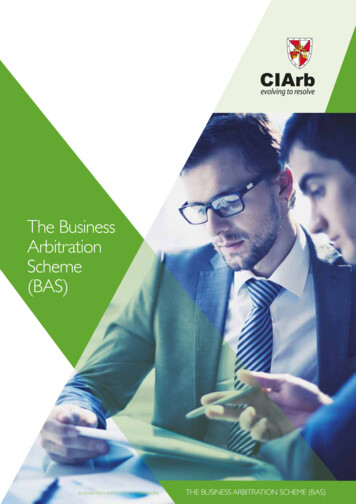
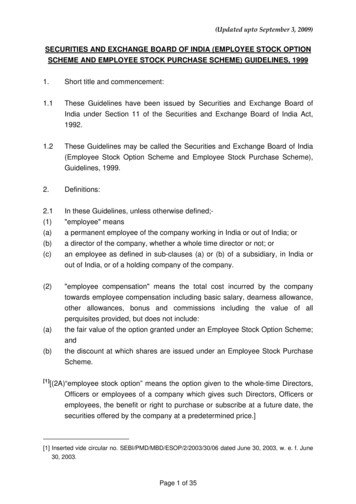

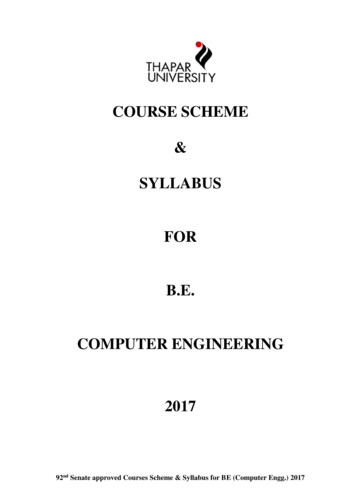
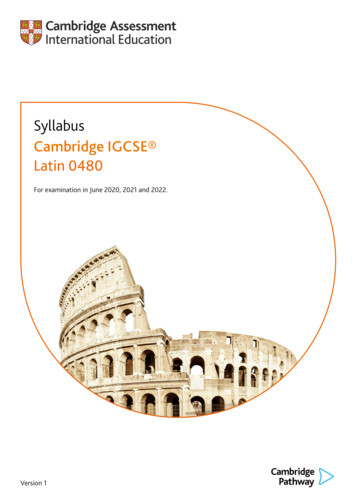
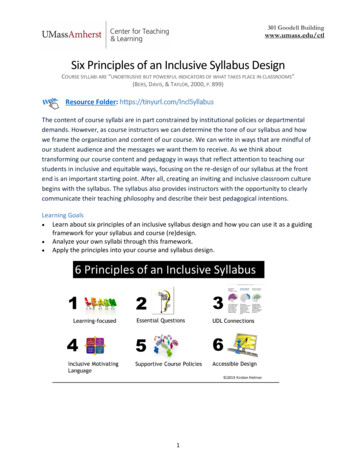
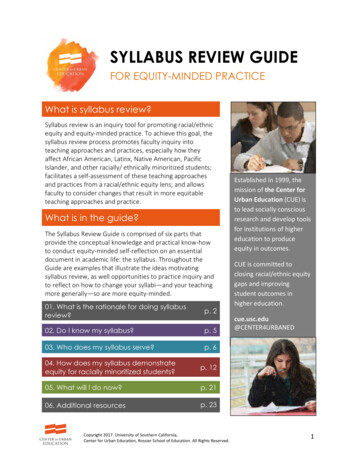
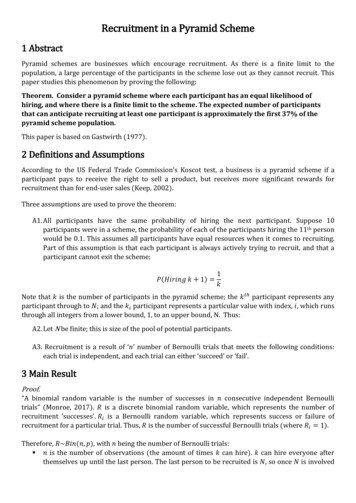
![[Title to come] DSP Dynamic Asset Allocation Fund](/img/24/dsp-dynamic-asset-allocation-fund.jpg)
